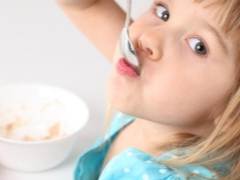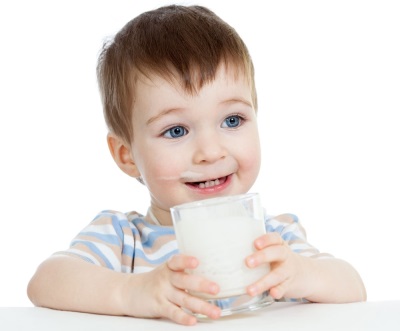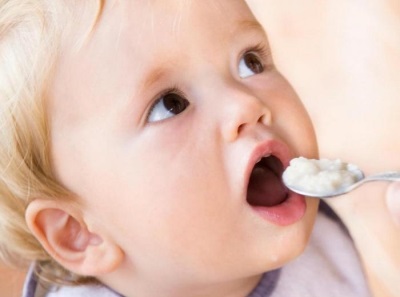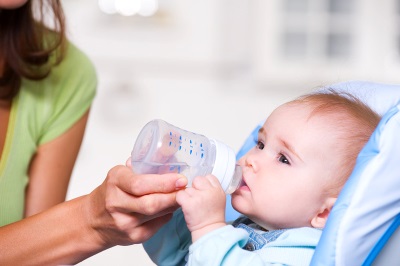Diet with vomiting and after
Vomiting can occur in a child with various diseases, for example, it is a common symptom of poisoning and intestinal infections. Also an attack of vomiting may occur in a child with a high fever or a strong cough. There is also vomiting caused by irritation of the vomiting center in the brain, for example, during meningitis or concussion.
Almost always, vomiting in children is a pretext for seeking medical help. The doctor will determine why there is such an unpleasant symptom and tell you how to treat the baby. It is very important to pay maximum attention to drinking, which is given to a child with vomiting. But equally important is the appropriate nutrition. What should it be during vomiting and after it stops?
Principles of nutrition
- During bouts of vomiting, the child usually has no appetite. Parents should not feed the crumb forcefully; it is enough just to ensure the correct drinking regimen (give salt solutions, compote, water and other permitted beverages).
- Diet after vomiting should be the most gentle to the digestive tract. It should include easily digestible foods that will not be an additional burden on the digestive organs of the baby.
- The severity and duration of the diet after vomiting will be influenced by the cause of this symptom. If vomiting appeared after injury, stress, eating disorders, and was once, a diet is recommended for one or two days. If vomiting is a symptom of an intestinal infection or food poisoning, the baby’s nutrition will have to be controlled much longer (one to two weeks).
- It is important to reduce the intake of food fats, because they are digested for a long time and load the digestive tract. It is also recommended to limit carbohydrates because of their ability to enhance fermentation processes in the intestine.
Babies
Feeding mother's milk with vomiting is not stopped, but on the contrary, they often apply a baby to the breast. Mom's milk is easily digested and helps replenish the waste of liquid. Artificially fed babies continue to be given a familiar mixture. Also, these kids can be given a mixture with the addition of rice or buckwheat flour
If the infant baby has already started feeding, it should be canceled for a while, and as soon as the baby’s digestion is improved, start introducing the foods again with small portions. First, cereals and vegetable purees, as well as dairy products, are returned to the infant’s diet.
Older children
Children older than a year during vomiting are recommended to feed on appetite. For most babies, vomiting is combined with a decrease in appetite, and the child does not need to be forced to eat, provided that he is provided with sufficient fluid intake. As soon as the child asks for food, give him foods allowed in the diet in small portions. Extend the menu, as well as increase the amount of food should be very carefully.
Recommended Products
- Liquid cereals (buckwheat, rice, oatmeal), boiled in water. You can also offer porridge in milk with water 1 to 1.
- Vegetable puree.
- Croutons from wheat bread, galette cookies.
- Bananas.
- Baked apples.
- Boiled carrots.
- Boiled eggs.
What can not eat?
In the period of recovery of the baby, who had vomiting, it is worth to wait a little with fish and meat dishes.They are given only two to four days after the attacks of vomiting have ceased, and a soufflé or steam meatballs are prepared for the child.
Other products that should not be given to the baby until his digestive tract finally gets stronger include:
- Fresh fruits and juices from them.
- Sweets.
- Fresh pastries.
- Millet, barley and barley porridge.
- Meat and fish broths.
- Raw vegetables.
- Rye bread and crackers from it.
- Fatty foods (oils and others).
- Mushrooms
- Fast food, smoked products.
If vomiting is combined with diarrhea, milk and dairy products, prunes, beets, fresh kefir, legumes should be excluded from the baby’s diet. Give crumbs eggs, rice and cottage cheese as products with a fixing effect.
How best to cook?
It is advisable to cook for children fresh food. In order to improve the absorption of food consumed during the recovery period, as well as to prevent its harmful effects on the stomach, it is better to boil, grind and grind foods. Very boiled porridges, kissels, mashed vegetables, souffles are very useful for kids. You can give ready baby food.
All vomiting allowed after attacks is boiled, steamed or stewed. Food is given to the child only warm, since a very hot or cold meal will traumatize the gastric mucosa and become less digestible.
Feeding mode
During vomiting, a child is given a lot to drink, while all permitted beverages should be offered in small portions - literally a teaspoon. So you do not provoke repeated bouts of vomiting. Food, while vomiting continues, the child is better not to offer. It is recommended to wait with feeding about 5-6 hours after vomiting.
As soon as the vomiting episodes stopped, and the child wanted to eat, give him a small amount of food. It is best to feed the baby up to seven times a day at intervals of two hours. Recall that forcing a child to eat should not, as well as offering crumbs of food in large quantities. Regular portions should be returned three to five days after cessation of vomiting.














